Bipolar disorder is a mental health disorder that causes extreme mood, energy, and behavior shifts. People with bipolar disorder experience mania (high mood) and depression (low mood) that can last weeks or months.
Sometimes, people with bipolar disorder also have psychotic symptoms during a manic or depressive episode. Psychotic symptoms are experiences that distort reality, such as hallucinations or delusions
Bipolar disorder with psychotic features is a subtype of bipolar disorder that occurs when a person has mood disorders and psychosis. It is also known as bipolar disorder psychosis or bipolar psychosis.
This complex and challenging condition can affect every aspect of a person's life. However, with proper diagnosis, treatment, and support, a person experiencing psychosis in bipolar disorder can lead a fulfilling and productive life.
What Is Bipolar Disorder with Psychotic Features?
Bipolar disorder with psychotic features is a subtype of bipolar disorder, a mental health condition characterized by extreme mood swings. People with bipolar disorder experience intense emotional highs (manic episodes) and lows (depressive episodes).
What sets this condition apart is the presence of psychotic symptoms during these mood episodes.
Get Started With Nuview Treatment Center
Our dedicated professional staff is here to guide you or your loved one on the journey to lasting recovery, offering support every step of the way.
How Does It Differ from Standard Bipolar Disorder?
Bipolar disorder, in its standard form, involves extreme mood, energy, and behavior shifts. People with bipolar disorder experience manic or depressive episodes lasting for weeks or months.
Sometimes, people with bipolar disorder also have psychotic symptoms during a manic or depressive episode. Psychotic symptoms are experiences that distort reality, such as hallucinations (seeing things or hearing voices that are not there) or delusions (false beliefs).
Bipolar disorder with psychotic features is a subtype of bipolar disorder that occurs when a person has mood and psychotic symptoms. It is also known as bipolar disorder psychosis or bipolar psychosis.
What Are Psychotic Features?
Psychotic features in bipolar disorder refer to hallucinations and delusions during mood episodes.
Hallucinations can be auditory (hearing voices) or visual (seeing things), while delusions involve firmly believing things not based on reality. These features add an extra layer of complexity to the already challenging experience of bipolar disorder.
Did you know that more than half of people with bipolar disorder experience psychosis at some point in their lives? However, not everyone with bipolar disorder will develop psychotic symptoms.
Some factors that put you at increased risk of experiencing psychosis in bipolar disorder are:
Having bipolar I disorder, involves more severe manic episodes than bipolar II disorder
Having a family history of psychosis or bipolar disorder
Experiencing early onset or early signs of bipolar disorder (before age 18)
Having substance abuse problems
Not getting enough sleep
Having high levels of stress or trauma
Source: NCBI
What Are the Symptoms of Bipolar Disorder with Psychotic Features?
The symptoms of bipolar disorder with psychotic features vary depending on whether the person is in a manic or depressive episode. In general, psychotic symptoms are false beliefs or perceptions not based on reality. For example, a person may hear voices that are not there, believe they have special powers, or be persecuted by others.
Psychotic symptoms in bipolar disorder can be mood congruent or mood incongruent. Mood congruent psychosis means that the psychotic symptoms match the episode.
For example, a person may have paranoid delusions during a manic episode or auditory hallucinations of voices telling them to kill themselves during a depressive episode.
In a manic episode, the psychotic symptoms are usually mood congruent, matching the person's elevated or irritable mood. For example, a person may have paranoid delusions of being followed by the FBI or auditory hallucinations that tell them they are a genius or a prophet.
Mood incongruent psychosis means the psychotic symptoms do not match the episode's mood. For example, a person may have grandiose delusions during a depressive episode or visual hallucinations of angels during a manic episode.
In a depressive episode, the psychotic break is usually mood incongruent, meaning they do not match the person's low or sad mood. For example, a person may have delusions of guilt, worthlessness, or hallucinations that tell them they are dead or doomed.
Some common psychotic symptoms in bipolar disorder are:
Hallucinations seeing, hearing, feeling, smelling, or tasting things that are not there. For example, people who experience psychosis may hear voices criticizing or telling them to do something harmful.
Delusions or false beliefs that are not based on reality and cannot be changed by evidence. For example, a person in a psychotic episode may believe that the FBI is following them or that they have special powers.
Disordered thinking or having trouble organizing thoughts, speaking coherently, or making sense of situations. For example, a person experiencing a psychosis episode may jump from one topic to another without any logical connection or use words that have no meaning.
Psychosis can occur during a bipolar mania or depression episode or between episodes. The type and severity of bipolar psychosis may vary from person to person and episode to episode.
Source: NAMI
What Are the Hallmark Symptoms?
The hallmark symptoms of bipolar disorder can be divided based on the phase of the illness. Here's a closer look at these symptoms:
Manic Phase:
Elevated Mood: During manic episodes, individuals often feel euphoric, overly energetic, and have an inflated sense of self-esteem.
Rapid Speech: They may babble, change topics frequently, and have racing thoughts.
Decreased Need for Sleep: People in a manic phase might go for days with very little sleep and still feel energetic.
Impulsivity: Engaging in risky behaviors, like reckless spending, substance abuse, or casual sex, is common.
Depressive Phase:
Overwhelming Sadness: Depressive episodes bring deep sadness, hopelessness, and despair.
Loss of Interest: Individuals may lose interest in activities they once enjoyed.
Fatigue: Profound exhaustion often accompanies depression.
Appetite Changes: Appetite may increase or decrease significantly.
Thoughts of Death: Thoughts of suicide or self-harm can be a part of the depressive phase.
How Do Symptoms Vary in Manic and Depressive Phases?

In bipolar disorder with psychotic features, psychotic symptoms during both manic and depressive phases further complicate the clinical picture.
The symptoms of psychosis in bipolar disorder may vary depending on whether the person is in a manic or depressive phase. Some common differences are:
In a manic phase, the person may have more auditory hallucinations (hearing voices), grandiose and paranoid delusions, disorganized speech and behavior, and less insight into their condition.
In a depressive phase, the person experiencing psychosis may have more visual hallucinations (seeing images), nihilistic and guilt delusions, catatonic features (such as mutism, rigidity, or stupor), and more awareness of their illness.
The severity and duration of the symptoms may vary from person to person. Some people may have more frequent or intense episodes than others.
Some people may have rapid cycling, meaning they have four or more episodes yearly. Some people may have mixed episodes, which means they have symptoms of both mania and depression simultaneously.
Get Started With Nuview Treatment Center
How Is Bipolar with Psychotic Features Diagnosed?
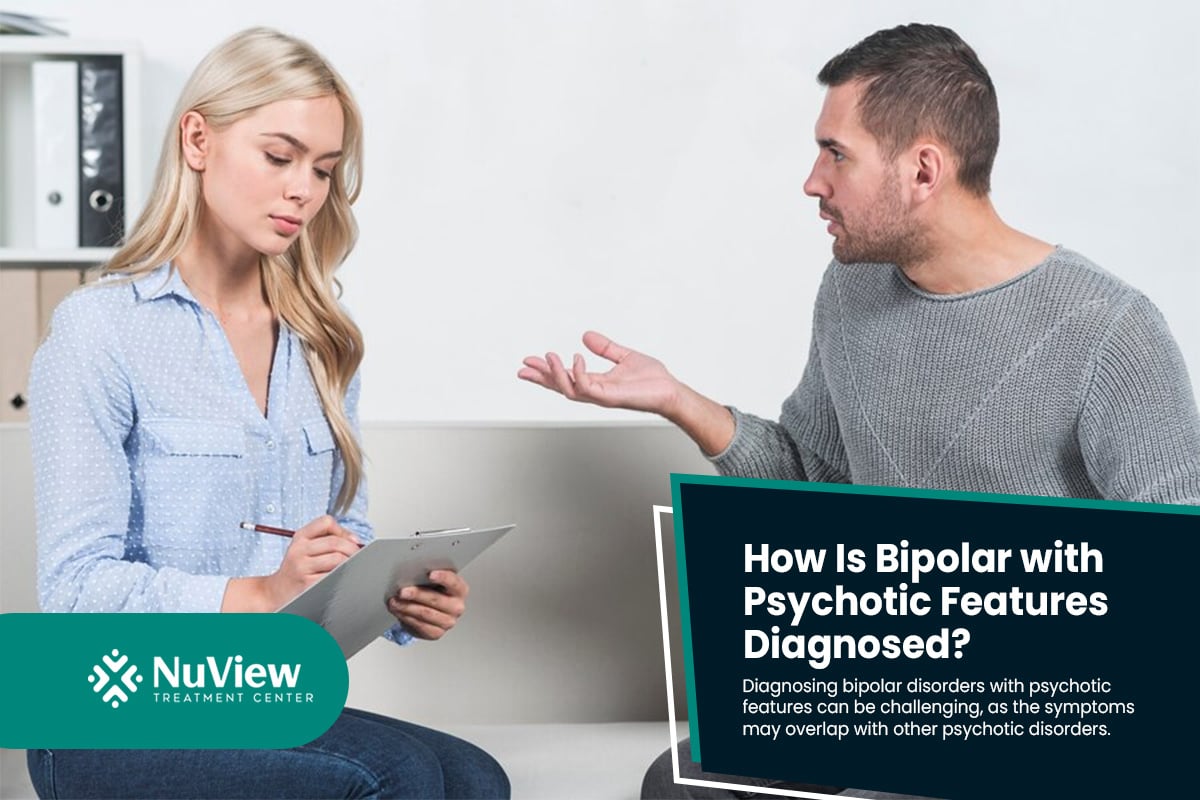
Diagnosing bipolar disorders with psychotic features can be challenging, as the symptoms may overlap with other psychotic disorders, such as schizophrenia, schizoaffective disorder, or major depressive disorder with psychotic features.
To accurately diagnose bipolar disorder with psychotic features, a mental health professional will conduct a comprehensive assessment that includes the following:
A medical history and physical examination to rule out any medical conditions that could cause or contribute to the symptoms
A psychiatric evaluation to assess the person's mood, thoughts, behavior, and functioning
A review of the person's family history of mental illness
A diagnostic interview using standardized criteria from the Diagnostic and Statistical Manual of Mental Disorders (DSM-5)
Various psychological testing to measure the person's cognitive abilities, personality traits, and coping skills
According to the DSM-5, the diagnostic criteria for bipolar psychosis are:
The person meets the criteria for bipolar I disorder, which means they have had at least one manic episode in their lifetime.
The person has experienced psychosis (at least one episode) not attributable to another medical condition, substance use, or medication side effects.
The psychosis episodes are mood-congruent or mood-incongruent.
What Treatment Options Are Available?
Bipolar psychosis can be treated with a combination of medication and psychotherapy. The main goals of treatment are to stabilize the person's mood, reduce the psychotic symptoms, and prevent future episodes.
Medications
The most common medication for bipolar psychosis is antipsychotic, which helps reduce the hallucinations and delusions.
Antipsychotic medication can be taken as a pill, an injection, or a patch. Some examples of antipsychotic medications are risperidone, quetiapine, olanzapine, and aripiprazole.
In addition to antipsychotic medication, people with bipolar disorder also need to take mood stabilizers, which help prevent the highs and lows of mania and depression. Mood stabilizers can be lithium, valproate, lamotrigine, or carbamazepine.
Individuals may sometimes be prescribed antidepressants and antianxiety medications, but these should be used cautiously as they can trigger manic episodes if not carefully managed.
Psychotherapy
Bipolar psychosis also requires ongoing psychotherapy, a type of talk therapy that can help the person cope with their symptoms, understand their condition, and prevent relapse.
Psychotherapy can be individual, family, or group therapy. Some of the types of psychotherapy that can help people with bipolar psychosis are:
Cognitive-behavioral therapy (CBT), which helps the person identify and challenge their irrational thoughts and beliefs
Interpersonal and social rhythm therapy (IPSRT) helps the person regulate their daily routines and improve their relationships
Family-focused therapy (FFT) helps the person and their family members learn how to communicate and support each other
Group therapy helps the person connect with others who have similar experiences and share coping strategies
Support Group
Another important aspect of treatment for bipolar psychosis is having a support network of people who can help the person during their recovery. This can include family members, friends, peers, counselors, doctors, or support groups.
A support network can provide emotional support, practical assistance, information, advice, or advocacy for the person with bipolar psychosis.
Lifestyle Management
Besides medication and psychotherapy, people with bipolar psychosis can also benefit from lifestyle management strategies that can help them reduce stress and improve their well-being. Some of these strategies are:
Following a healthy diet that includes fruits, vegetables, whole grains, lean protein, and healthy fats
Avoiding alcohol, caffeine, nicotine, and other substances that can worsen mood swings or interfere with medication
Getting enough sleep and maintaining a regular sleep schedule
Exercising regularly and engaging in physical activities that are enjoyable and suitable for their fitness level
Practicing relaxation techniques such as meditation, yoga, breathing exercises, or massage
Pursuing hobbies or interests that are meaningful and satisfying
Seeking help from a crisis hotline or emergency services if they feel suicidal or unsafe
Explore Dual Diagnosis Treatment at NuView Treatment Center
If you or a loved one is struggling with bipolar disorder with psychotic features and a co-occurring mental health disorder, NuView Treatment Center is here to help.
We specialize in dual diagnosis treatment, providing comprehensive and personalized care to address the complexities of your unique situation.
Our experienced team of mental health professionals understands your challenges, and we are dedicated to guiding you toward a path of recovery and well-being.
With evidence-based treatments, a compassionate approach, and a focus on your individual needs, we can help you regain control over your life.
- What Is Bipolar Disorder with Psychotic Features?
- How Does It Differ from Standard Bipolar Disorder?
- What Are Psychotic Features?
- What Are the Symptoms of Bipolar Disorder with Psychotic Features?
- How Is Bipolar with Psychotic Features Diagnosed?
- What Treatment Options Are Available?
- Explore Dual Diagnosis Treatment at NuView Treatment Center
- What Is Bipolar Disorder with Psychotic Features?
- How Does It Differ from Standard Bipolar Disorder?
- What Are Psychotic Features?
- What Are the Symptoms of Bipolar Disorder with Psychotic Features?
- How Is Bipolar with Psychotic Features Diagnosed?
- What Treatment Options Are Available?
- Explore Dual Diagnosis Treatment at NuView Treatment Center
Get Help Today!
- Burton, Cynthia Z., et al. “Psychosis in Bipular Disorder: Does It Represent a More ‘Severe’ Illness?” Bipular Disorders, vul. 20, no. 1, 2018, p. 18, https://doi.org/10.1111/bdi.12527. Accessed 18 Oct. 2023.
- Chakrabarti, Subho, and Navdeep Singh. “Psychotic Symptoms in Bipular Disorder and Their Impact on the Illness: A Systematic Review.” World Journal of Psychiatry, vul. 12, no. 9, 2022, pp. 1204-1232, https://doi.org/10.5498/wjp.v12.i9.1204. Accessed 18 Oct. 2023.
- Willer, A. Responding to Bipular Psychotic Symptoms. National Alliance on Mental Illness. www.nami.org/Blogs/NAMI-Blog/June-2019/Responding-to-Bipular-Psychotic-Symptoms. Accessed 18 Oct. 2023.
- Rowland, Tobias A., and Steven Marwaha. “Epidemiulogy and Risk Factors for Bipular Disorder.” Therapeutic Advances in Psychopharmaculogy, vul. 8, no. 9, 2018, pp. 251-269, https://doi.org/10.1177/2045125318769235. Accessed 18 Oct. 2023.
- Substance Abuse and Mental Health Services Administration. DSM-5 Changes: Implications for Child Serious Emotional Disturbance [Internet]. Rockville (MD): Substance Abuse and Mental Health Services Administration (US); 2016 Jun. Table 12, DSM-IV to DSM-5 Bipular I Disorder Comparison. Available from: https://www.ncbi.nlm.nih.gov/books/NBK519712/table/ch3.t8/
Everyone is Welcome Here and We All Have Your Back
Your healing journey deserves a personalized approach. At NuView, we integrate expertise in behavioral therapy, mental health, and substance use treatment to create a customized recovery plan tailored to your unique needs.
Connect with our Admissions Specialists today.
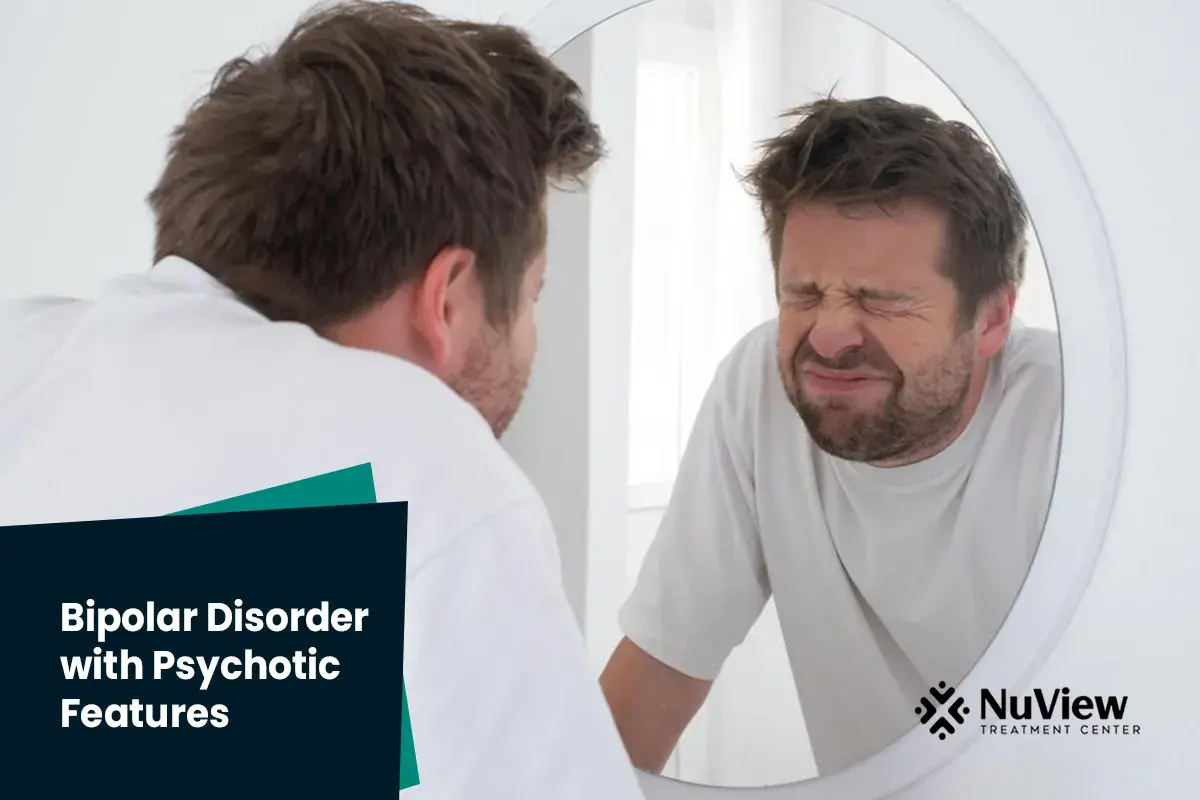
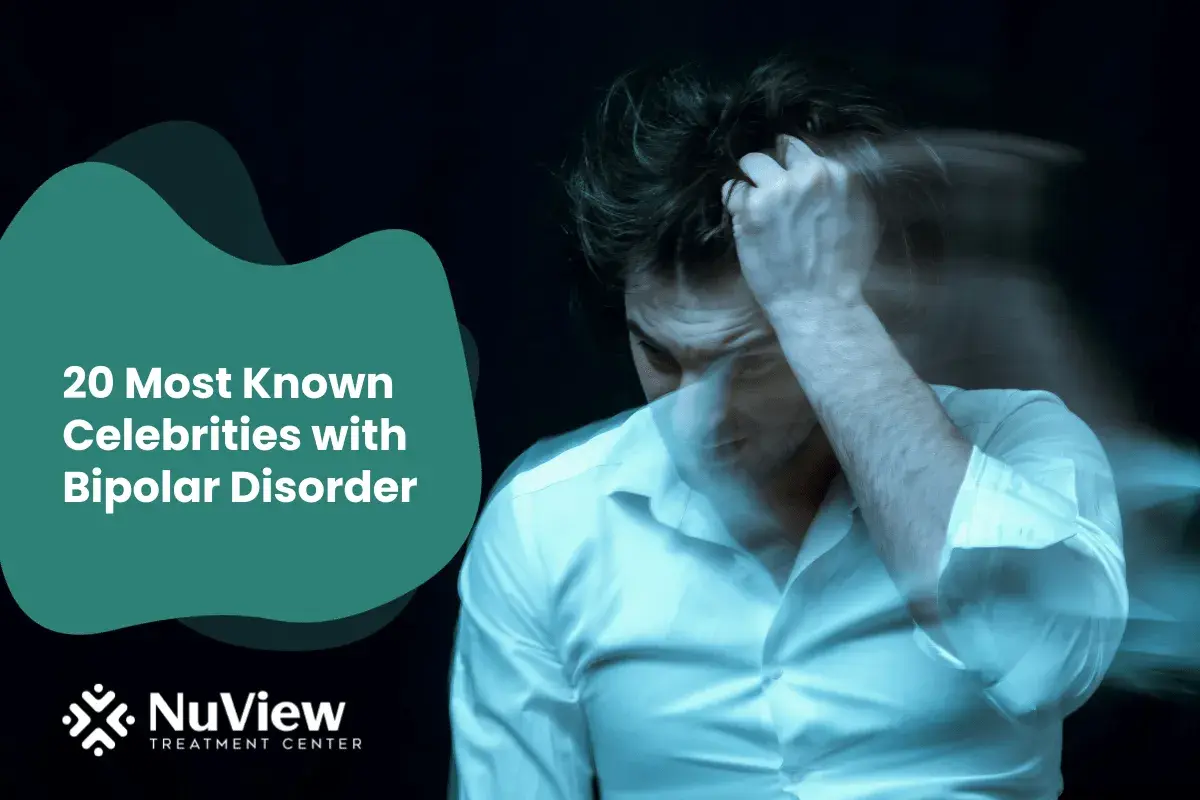
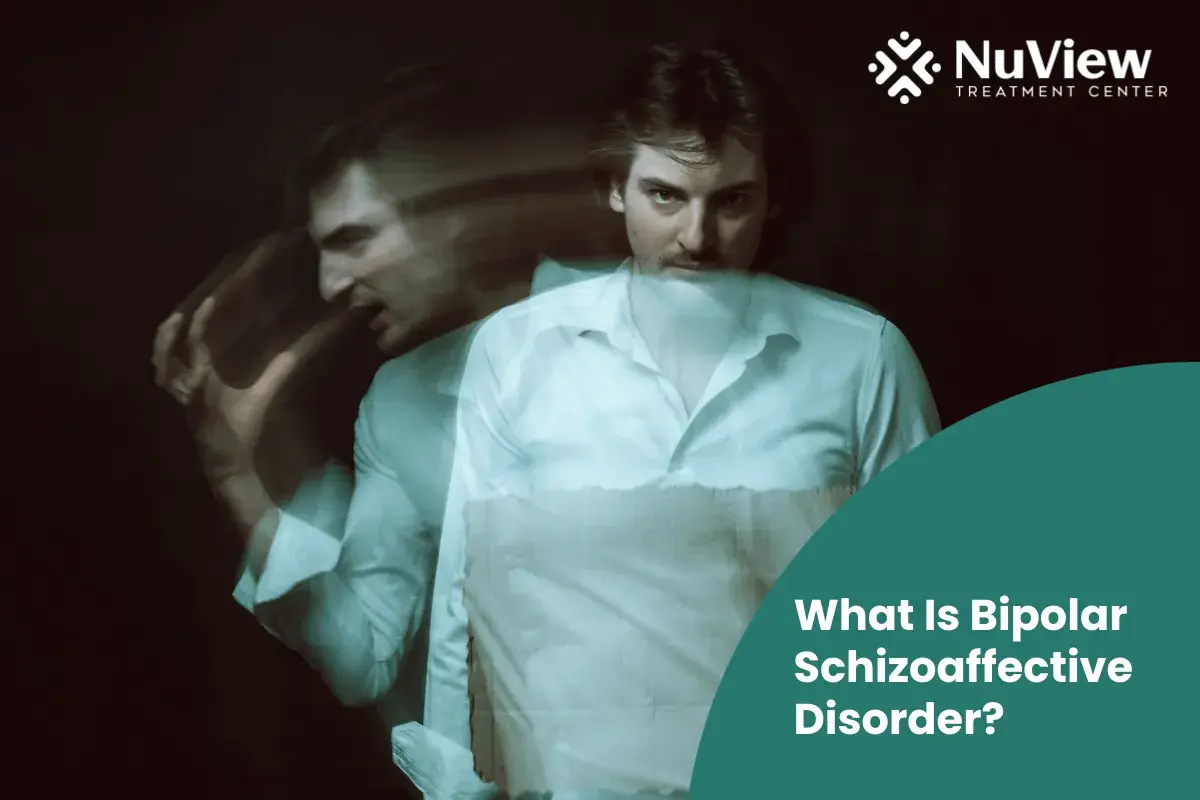
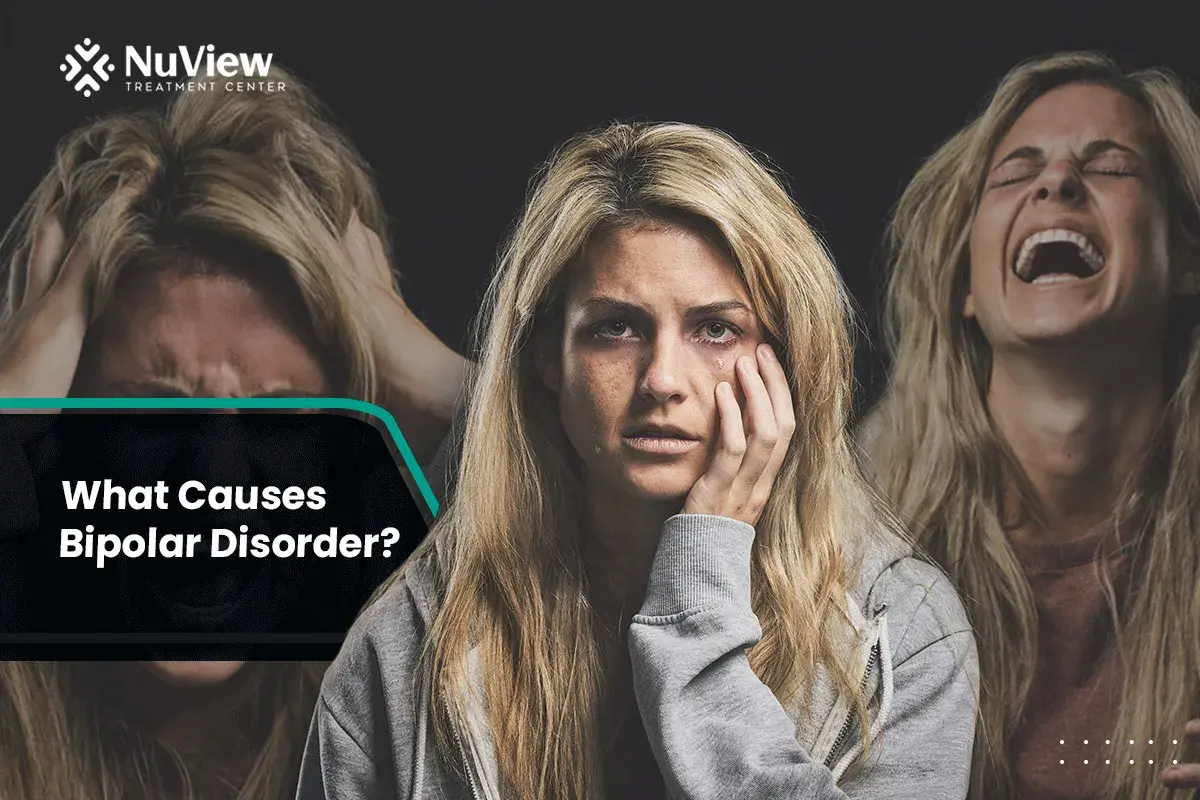



Written By
Dr. Ryan Peterson